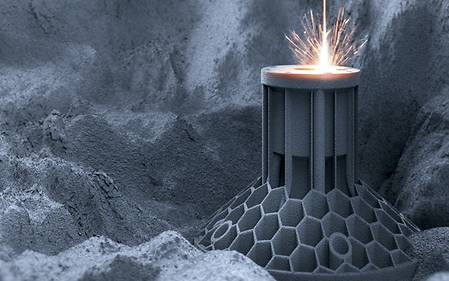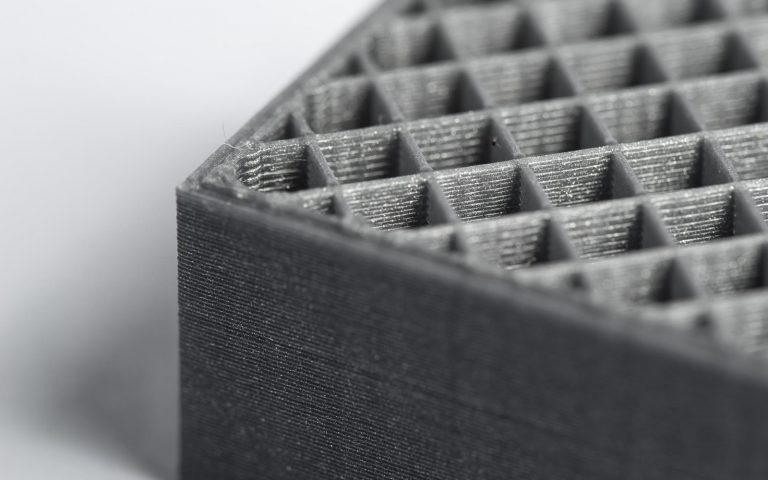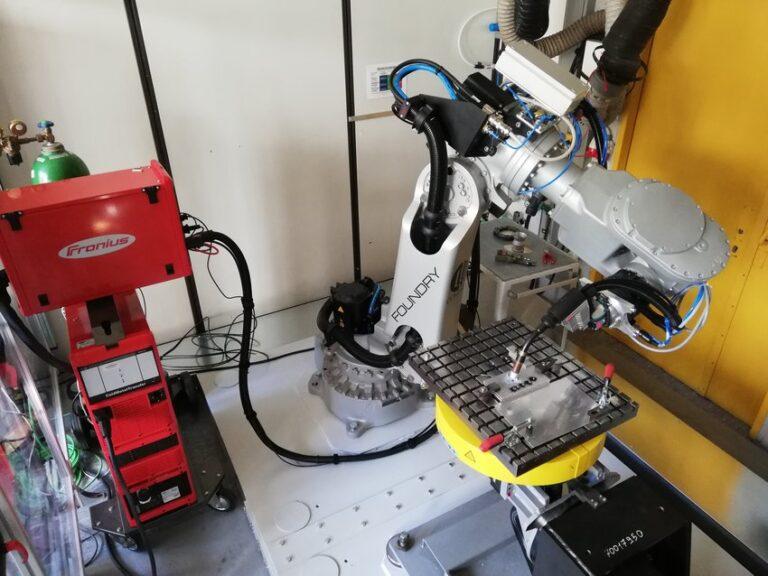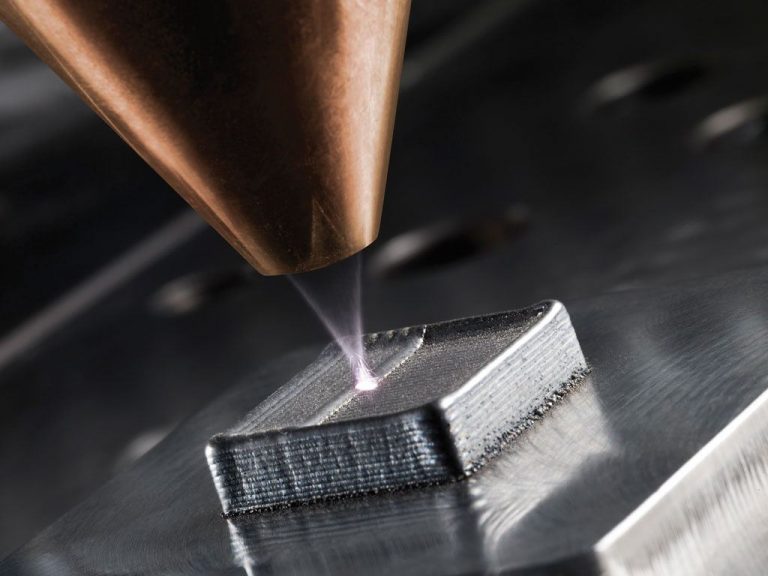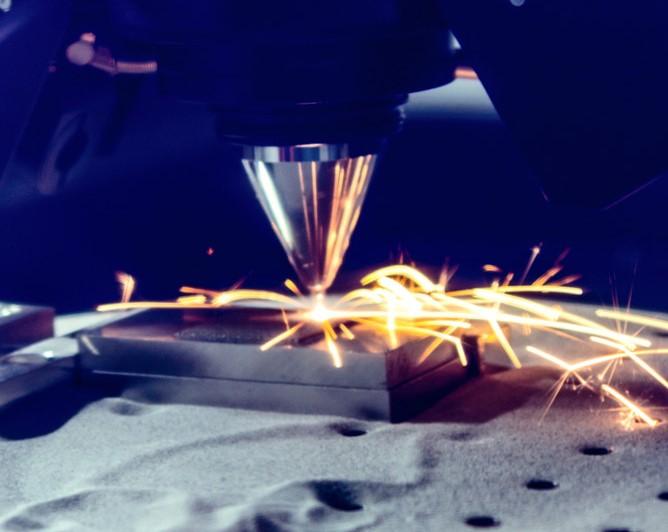Aluminum Additive Manufacturing: A Review of the Latest Technologies and Applications
Introduction
Aluminum Additive Manufacturing (AAM) is a cutting-edge field gaining momentum. Why? It combines the versatility of 3D printing with the exceptional properties of aluminum. This technology can create complex shapes, previously unachievable. Moreover, it reduces waste, making it an attractive, sustainable solution. However, to grasp its full potential, we must understand its process, applications, and challenges. This review delves into this intriguing domain, shedding light on the latest technologies and applications. So, let’s get started.
Definition and explanation of Aluminum Additive Manufacturing (AAM)
Aluminum Additive Manufacturing (AAM) stands at the intersection of materials science and advanced technology. At its core, the process involves creating 3D objects from aluminum by building up the material layer by layer, guided by digital 3D models. Different from traditional methods, AAM brings about unique advantages. It offers ‘design freedom’, enabling the creation of complex shapes with ease. It also cuts down waste, making it a more sustainable choice.
Brief on the significance of Aluminum in AM
Aluminum holds a special place in Additive Manufacturing (AM). Why? For starters, aluminum’s lightweight and robust strength make it a go-to choice. These properties make it ideal for applications where weight matters, such as aerospace and automotive. Next, aluminum exhibits excellent thermal conductivity and corrosion resistance. This opens doors to various uses, from heat exchangers to marine components. Furthermore, engineers can design aluminum alloys to offer a wide range of characteristics, tailored to specific needs. Lastly, aluminum’s recyclability aligns with the sustainability goals of AM. Clearly, aluminum is a cornerstone of the AM industry, and understanding its use can unlock new possibilities. Let’s explore this further.
Growth and Potential of Metal AM, Focusing on Aluminum
The AM industry is experiencing unprecedented growth, and metal AM stands at the forefront. Especially, aluminum has been turning heads. Why? Because its unique properties cater to a broad array of applications. Industries from aerospace to dental are capitalizing on these benefits. They’re manufacturing intricate components that were previously impossible or uneconomical.
Moreover, AM’s ability to produce on-demand and minimize waste offers significant economic and environmental benefits. Importantly, innovations are constantly emerging, pushing the boundaries of what’s possible with aluminum AM. We still need to fully exploit the potential of this technology, despite current limitations. Thus, the outlook for aluminum AM remains promising, as we’ll discuss further.
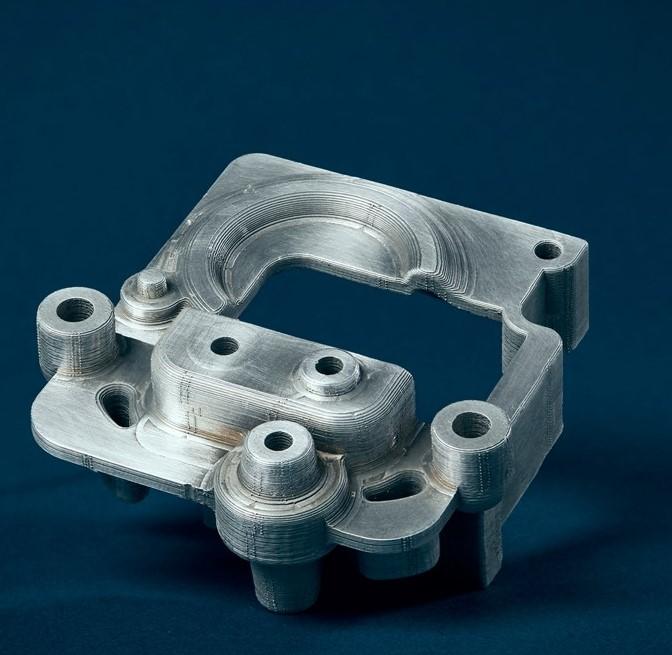
Aluminum Additive Manufacturing Processes
Direct Metal Laser Sintering (DMLS)
DMLS is a primary method in Aluminum AM. How does it work? It starts with a thin layer of aluminum powder spread over a build platform. A laser then traces the cross-section of the object, melting the powder. The process repeats as the machine spreads another layer of powder after lowering the platform. Layer by layer, the object takes shape. The advantage? DMLS allows for complex geometries and internal structures. However, it does require post-processing to remove unused powder and improve the surface finish.
Selective Laser Melting (SLM)
People widely use Selective Laser Melting (SLM) as another Aluminum Additive Manufacturing process. Similar to DMLS, it uses a laser to melt aluminum powder. The key difference? SLM fully melts the powder, resulting in parts with higher density and superior mechanical properties. It’s ideal for creating components that must withstand high stress. But, the process demands careful control of parameters to avoid defects. Furthermore, it often requires support structures, adding to post-processing time.
Electron Beam Melting (EBM)
Lastly, let’s talk about EBM. Here, an electron beam melts the aluminum powder instead of a laser. The process occurs in a vacuum, which reduces the risk of oxidation. This leads to high-quality parts with excellent mechanical properties. EBM can also manufacture larger parts compared to DMLS and SLM. But, it has a slower build rate and requires more energy. Also, the surface finish of EBM parts can be rough, necessitating post-processing.
Overall, each Aluminum AM process has its strengths and limitations. Understanding these can help you choose the proper process for a specific application. Next, we’ll dive into the materials and properties involved in Aluminum AM.
Discussion on the working principles, advantages, and disadvantages of each process
| DMLS | SLM | EBM | |
|---|---|---|---|
| Working Principles | Uses a laser to selectively melt aluminum powder layer by layer | Similar to DMLS, but fully melts the powder | Uses an electron beam to melt the aluminum powder in a vacuum |
| Advantages | Allows for complex geometries and internal structures | Produces parts with higher density and superior mechanical properties | Reduces the risk of oxidation, can manufacture larger parts, produces high-quality parts with excellent mechanical properties |
| Disadvantages | Requires post-processing to remove unused powder and improve surface finish | Demands careful control of parameters to avoid defects, requires support structures, adding to post-processing time | Has a slower build rate, requires more energy, the surface finish can be rough necessitating post-processing |
Latest advancements and innovations in these processes
Here are the latest advancements and innovations in EBM, SLM, and DMLS processes with a focus on aluminum:
EBM
- Improved laser power: Newer EBM systems use higher-power lasers, allowing faster printing speeds and better surface finishes.
- New materials: EBM systems can now print with a broader range of materials, including aluminum alloys, titanium alloys, and stainless steel.
- Improved software: New EBM software makes designing and printing complex parts easier.
SLM/DMLS
- Improved laser power: Newer SLM/DMLS systems use higher-power lasers, allowing faster printing speeds and better surface finishes.
- New materials: SLM/DMLS systems can now print with a wider range of materials, including aluminum alloys, titanium alloys, stainless steel, and even plastics.
- Improved build platforms: Newer SLM/DMLS systems use heated build platforms, which helps to prevent warping and improve the strength of printed parts.
Overall
The latest advancements and innovations in EBM, SLM, and DMLS processes have made it possible to print complex, high-performance parts from a wide range of materials, including aluminum. This has opened up new possibilities for using additive manufacturing in various industries, including aerospace, automotive, and medical.
Materials and Properties
The following text presents the various aluminum alloys utilized in additive manufacturing, highlighting their respective challenges and advantages:
- AlSi10Mg: Manufacturers most commonly use this alloy in additive manufacturing. It is strong and has good machinability, making it ideal for various applications. However, it is also susceptible to corrosion, so it is important to use a protective coating.
- Al6061: Additive manufacturing also commonly uses this alloy. It is strong and lightweight, ideal for aerospace and automotive applications. However, it is not as machinable as AlSi10Mg, so it can be more challenging to work with.
- Al7075: This alloy is the strongest aluminum alloy available for additive manufacturing. Applications requiring high strength, such as aircraft and military equipment, use it. However, it is also the most expensive aluminum alloy and can be challenging to machine.
Here are some of the challenges and advantages of using aluminum alloys in additive manufacturing:
Challenges
- Corrosion: Aluminum alloys are susceptible to corrosion, so it is important to use a protective coating.
- Porosity: Additive manufacturing can create porosity in the metal, reducing strength and ductility.
- Cost: Aluminum alloys can be more expensive than other materials, such as plastics.
Advantages
- Lightweight: Aluminum alloys are lightweight, which can reduce the weight of parts and improve fuel efficiency.
- Strength: Aluminum alloys can be strong, making them suitable for various applications.
- Customization: Additive manufacturing allows for the customization of parts, saving time and money.
Overall, aluminum alloys are a good choice for additive manufacturing. These materials possess strength, exhibit lightweight properties, and allow customization to meet specific requirements. However, it is crucial to know the challenges associated with using aluminum alloys, such as corrosion and porosity.
Discussion on the effects of AM processes on the mechanical properties and microstructure of Aluminum
Here is a discussion on the effects of AM processes on the mechanical properties and microstructure of aluminum alloy:
- Additive manufacturing (AM) processes can affect the mechanical properties of aluminum alloy by altering the microstructure. For example, selective laser melting (SLM) can create a fine-grained microstructure, improving the alloy’s strength and ductility.
- AM processes can also affect the corrosion resistance of the aluminum alloy. For example, SLM can create a porous surface, increasing the corrosion rate.
- Overall, the effects of AM processes on the mechanical properties and microstructure of aluminum alloy depend on the specific process and parameters used. It is important to consider these factors carefully when designing and manufacturing AM parts.
Here are some specific examples of how AM processes can affect the mechanical properties and microstructure of aluminum alloy:
- SLM can create a fine-grained microstructure, which can improve the strength and ductility of the alloy. This is because SLM melts the powder layer by layer, which allows for more uniform cooling and grain growth.
- SLM can also create a porous surface, increasing the corrosion rate. This is because the pores can act as nucleation sites for corrosion pits.
- Other AM processes, such as electron beam melting (EBM), can create a more homogeneous microstructure than SLM. This is because EBM melts the entire powder bed at once, which reduces the likelihood of hot spots and uneven cooling.
Overall, the effects of AM processes on the mechanical properties and microstructure of aluminum alloy depend on the specific process and parameters used. It is important to consider these factors carefully when designing and manufacturing AM parts.
Challenges related to the material properties of Aluminum in AM
There are several challenges related to the material properties of aluminum in additive manufacturing (AM).
- Porosity: AM parts often have porosity, leading to reduced strength and stiffness. The layer-by-layer construction of AM parts causes porosity. The molten metal or powder can solidify before it can fill the gaps between layers, resulting in voids.
- Residual stresses: AM parts can also exhibit residual stresses, leading to premature failure. The heating and cooling of the material during the AM process cause these stresses.
- Surface finish: The surface finish of AM parts is often better than that of parts produced by traditional manufacturing methods. A low surface finish can be a problem for parts that need to be smooth or have high accuracy.
- Heterogeneity: AM parts’ properties can vary from location to location. The heat and cooling conditions can change during the AM process. This heterogeneity can lead to problems such as poor fatigue performance and cracking.
Improve techniques
In AM, we can use several techniques to improve the material properties of aluminum. These include:
- Post-processing: Post-processing techniques such as heat treatment and machining can improve AM parts’ strength, stiffness, and surface finish.
- In-situ alloying: In-situ alloying is a technique that allows for adding alloying elements to the molten metal or powder during the AM process. In-situ alloying can improve AM parts’ strength, stiffness, and corrosion resistance.
- Design for AM: Design for AM (DfAM) is a design methodology that considers the unique properties of AM parts. A suitable design methodology can help reduce porosity, residual stresses, and other problems.
Despite the challenges, AM is a promising technology for producing aluminum parts. The development of new techniques and the widespread adoption of DfAM will help to overcome these challenges and make AM an even more viable manufacturing option for aluminum parts.
Industrial Applications of Aluminum AM
Here, we explore the utilization of aluminum Additive Manufacturing (AM) across various industries.
Aerospace
In the aerospace industry, manufacturers use aluminum AM to produce lightweight, high-strength parts for aircraft. These parts can be complex and intricate, often requiring tight tolerances. Aluminum AM can help to reduce the weight of aircraft, which can improve fuel efficiency and reduce emissions.
Some examples of how aluminum AM is used in the aerospace industry include:
- Engine components: Aluminum AM produces engine components such as fuel nozzles, turbine blades, and compressor disks. These components are made of high-strength aluminum alloys that are lightweight and strong.
- Airframe components: Aluminum AM produces airframe components such as brackets, fittings, and structural parts. These components are made of lightweight aluminum alloys that are strong and durable.
- Avionics components: Aluminum AM produces circuit boards, housings, and antennas. These components are made of lightweight aluminum alloys that are electrically conductive and corrosion-resistant.
Automotive
In the automotive industry, aluminum AM produces complex, lightweight car parts. These parts can improve fuel efficiency, reduce emissions, and enhance performance. Aluminum AM can also be used to create custom parts tailored to a particular vehicle’s specific needs.
Some examples of how aluminum AM is used in the automotive industry include:
- Engine components: Aluminum AM produces engine components such as pistons, connecting rods, and cylinder heads. These components are made of high-strength aluminum alloys that are lightweight and strong.
- Suspension components: Aluminum AM produces suspension components such as control arms, linkages, and shock absorbers. These components are made of lightweight aluminum alloys that are strong and durable.
- Body panels: Aluminum AM produces doors, hoods, and fenders. These panels are made of lightweight aluminum alloys that are strong and durable.
Medical
In the medical industry, aluminum AM produces prosthetics, implants, and other medical devices. These devices can be complex and intricate, often requiring tight tolerances. Aluminum AM can help create custom devices tailored to a particular patient’s specific needs.
Some examples of how aluminum AM is used in the medical industry include:
- Prosthetics: Aluminum AM produces prosthetic limbs like arms, legs, and hands. These limbs are made of lightweight aluminum alloys that are strong and durable.
- Implants: Aluminum AM produces implants such as hip replacements, knee replacements, and dental implants. These implants are made of high-strength aluminum alloys that are biocompatible and corrosion-resistant.
- Medical devices: Aluminum AM produces medical devices such as stents, catheters, and surgical tools. These devices are made of lightweight aluminum alloys that are strong and durable.
Other industries
In addition to the aerospace, automotive, and medical industries, a variety of other sectors also use aluminum AM, including:
- Energy: Aluminum AM produces components for wind turbines and other renewable energy devices.
- Defense: Aluminum AM produces components for weapons and other defense systems.
- Consumer goods: Aluminum AM makes consumer goods such as jewelry, eyewear, and sporting goods.
As the technology continues to develop, we expect to see even more innovative and groundbreaking applications for aluminum AM in various industries.
Specific examples of products or components manufactured using Aluminum AM
- GE Aviation: GE Aviation uses AM to produce fuel nozzles for its LEAP jet engines. The fuel nozzles are made of a high-strength aluminum alloy that is lighter and stronger than traditional ones. This application allows GE to reduce the weight of its jet engines, which saves fuel and reduces emissions.
- Ford Motor Company: Ford Motor Company uses AM to produce brake calipers for its Mustang EcoBoost engine. The brake calipers are made of a lightweight aluminum alloy that is stronger and more durable than traditional ones. This usage allows Ford to improve its Mustang EcoBoost engine’s braking performance without increasing the car’s weight.
- Smith & Nephew: Smith & Nephew uses AM to produce custom knee implants. The knee implants are made of a high-strength aluminum alloy that is lightweight and strong. This application allows Smith & Nephew to create custom knee implants tailored to the individual patient’s needs.
- Siemens Gamesa: Siemens Gamesa is using AM to produce blades for its wind turbines. The blades are made of a lightweight aluminum alloy that is strong and durable. This usage allows Siemens Gamesa to create wind turbines that are more efficient and generate more power.
These are just a few examples of how aluminum AM is used in industrial applications. As the technology continues developing, we expect to see even more innovative and groundbreaking applications for aluminum AM.
Benefits and challenges faced in these applications
Here are some of the benefits and challenges faced in aluminum AM applications:
Benefits
- Lightweight: Aluminum AM parts are light, which can improve fuel efficiency and reduce emissions.
- Strong: Aluminum AM parts are strong and durable.
- Customizable: Aluminum AM parts can be customized to meet the specific needs of a particular application.
- Complex: Aluminum AM can produce complex parts that would be difficult or impossible to create using traditional manufacturing methods.
- Cost-effective: The cost of aluminum AM is decreasing as technology develops.
Challenges
- Porosity: Aluminum AM parts can have porosity, reducing strength and stiffness.
- Residual stresses: Aluminum AM parts can have residual stresses, leading to premature failure.
- Surface finish: The surface finish of aluminum AM parts is often better than that of traditional manufacturing methods.
- Heterogeneity: The properties of aluminum AM parts can vary from one location to another.
- Limited availability: The availability of aluminum AM machines and materials is limited.
- High cost: The cost of aluminum AM is still high compared to traditional manufacturing methods.
Despite these challenges, aluminum AM is a promising technology with many potential applications. As the technology continues developing, we expect to see even more innovative and groundbreaking applications for aluminum AM.
Environmental and Economic Impacts
AM can potentially reduce environmental impacts and economic costs, but it can also increase them depending on the specific application.
Environmental Impacts
AM can reduce environmental impacts by:
- Reducing material waste: In AM, we only use the material necessary to create the object, reducing material waste by up to 90% compared to traditional manufacturing methods.
- Using recycled materials: AM can use recycled materials, reducing material waste and environmental impacts.
- Eliminating the need for tooling: AM does not require tooling, which can reduce energy consumption and emissions.
- Producing lightweight parts: AM can produce lightweight parts, improving fuel efficiency and reducing emissions.
However, AM can also increase environmental impacts by:
- Using energy-intensive processes: AM processes can be energy-intensive, which can increase emissions.
- Using hazardous materials: Some AM processes use dangerous materials, which can risk human health and the environment.
- Producing complex parts: AM can produce complex parts that are difficult to recycle, which can increase material waste.
Economic Impacts
AM can reduce economic costs by:
- Shortening product development cycles: AM can shorten product development cycles by allowing rapid prototyping and testing.
- Improving product performance: AM can improve product performance by allowing for the creation of complex, lightweight parts.
- Customizing products: AM can customize products to meet customers’ specific needs, which can increase sales.
However, AM can also increase economic costs by:
- High initial investment costs: The initial costs for AM machines and materials can be increased.
- High operating costs: The operating costs for AM machines can be increased due to energy-intensive processes.
- Low production rates: AM production rates are typically lower than traditional manufacturing methods, which can increase costs.
Overall, AM’s environmental and economic impacts depend on the specific application. AM can potentially reduce environmental impacts and economic costs, but it can also increase them depending on the particular application.
Here are some other things to consider when evaluating the environmental and economic impacts of AM:
- The type of AM process used
- The materials used
- The energy consumption and emissions associated with the AM process
- The potential for recycling or reuse of AM parts
- The cost of AM machines and materials
- The operating expenses of AM machines
- The production rates of AM machines
As the technology continues to develop, AM’s environmental and economic impacts are likely to change. It is essential to keep up with the latest research and developments in AM to make informed decisions about its use.
Future Trends and Challenges
Here are some of the future trends and potential improvements in aluminum AM:
Future Trends
- Development of new AM processes: Ongoing research and development of new AM processes could produce aluminum parts. These processes could offer improved properties, such as strength, stiffness, and surface finish.
- Development of new aluminum alloys: There is also ongoing research and development of new aluminum alloys designed explicitly for AM. These alloys could offer improved properties, such as strength, stiffness, and corrosion resistance.
- Increased availability of AM machines and materials: AM machines and materials is increasing, which could make AM more accessible to a broader range of users.
- Decreased cost of AM: AM is decreasing, which could make it more cost-effective for a broader range of applications.
Potential Improvements
- Improved properties: Developers can improve properties such as strength, stiffness, and surface finish in AM parts. They can achieve this improvisation by creating new AM processes and aluminum alloys.
- Reduced cost: AM could be reduced by developing more efficient AM processes and increasing the availability of AM machines and materials.
- Increased speed: The speed of AM could be improved by developing new AM processes and using more powerful AM machines.
- Improved accuracy: The accuracy of AM could be enhanced by developing new AM processes and using more precise AM machines.
- Increased flexibility: The flexibility of AM could be improved by developing new AM processes that can produce a broader range of parts.
Overall, the future of aluminum AM is promising. Several potential improvements could make AM more accessible, cost-effective, and versatile. As the technology continues to develop, we can expect to see AM used in a broader range of applications.
Here are some of the current limitations and challenges in aluminum AM:
Limitations
- Porosity: AM parts can have porosity, reducing strength and stiffness.
- Residual stresses: AM parts can have residual stresses, leading to premature failure.
- Surface finish: The surface finish of AM parts is often better than that of parts produced by traditional manufacturing methods.
- Heterogeneity: AM parts’ properties can vary from location to location.
- Limited availability: The availability of aluminum AM machines and materials is limited.
- High cost: The cost of aluminum AM is still high compared to traditional manufacturing methods.
Challenges
- Developing new AM processes and materials that can overcome the limitations of current AM technology.
- Increasing the availability and reducing the cost of AM machines and materials.
- Developing standards for AM processes and materials to ensure quality and consistency.
- Educating engineers and designers about the capabilities and limitations of AM.
- Overcoming regulatory hurdles to the widespread adoption of AM.
Aluminum AM is a promising technology with many potential applications despite these limitations and challenges. As the technology develops, we expect to see AM used in a wider range of industries and applications.
Conclusion with an outlook for the future of Aluminum AM
Here is a summary and outlook on Aluminum AM’s future:
Conclusion
AM for aluminum is a fast-evolving technology with many possible uses. The technology offers a more effective, affordable, and adaptable approach to making parts, potentially transforming the industrial sector.
Future Perspective
AM in aluminum has a promising future. The development of the technology is being fueled by several factors, including:
- the rising need for performance-oriented, lightweight components
- the increasing price of conventional manufacturing techniques
- The expansion of materials and machines for additive manufacturing
- the creation of novel AM techniques and materials
The following are some specific sectors where aluminum AM is anticipated to expand in the future:
Aerospace: Manufacturers already use aluminum AM to produce aircraft parts, including engine and airframe components. As technology advances, we expect to see the use of AM in creating increasingly complicated and complex aircraft parts.
Automotive: Manufacturers use Aluminum AM to create engine and suspension parts for cars. As technology advances, we expect them to produce an even greater variety of lightweight, high-performance car parts using AM.
Medical: Aluminum AM makes implants, prosthetics, and other medical equipment. We may anticipate the usage of AM to create increasingly more specialized and unique medical devices as technology advances.
Energy: Parts for wind turbines and other renewable energy sources are already made with aluminum AM. We may anticipate the usage of AM to produce progressively more effective and affordable parts for renewable energy systems as technology advances.
Defense: The production of weapons and other components for defense systems already uses aluminum AM. We may anticipate seeing AM used to create progressively more intricate and sophisticated parts for military systems as technology advances.
Consumer products: Manufacturers already use aluminum AM to create jewelry, eyewear, and other items. As technology advances, we expect to see its use expand to produce even more cutting-edge and fashionable consumer goods.
Overall, aluminum AM has a promising future. The manufacturing sector might transform thanks to technology, opening up new prospects for consumers and enterprises.
How to choose the right Aluminum alloy for your Additive Manufacturing project?
- Understand Your Project Requirements
Assess the needs and constraints of your specific project. What are the performance criteria? Are there any specific physical, thermal, or mechanical properties required?
- Research Different Aluminum Alloys
Familiarize yourself with the properties of various Aluminum alloys. Some may have better strength, others might be more resistant to heat or corrosion.
- Consider the Manufacturing Process
Different alloys may perform better in different additive manufacturing processes. Research the compatibility of each alloy with your chosen AM process.
- Evaluate Post-processing Needs
Some alloys may require extensive post-processing or have specific handling requirements. Be sure these align with your capabilities and budget.
- Consult with Experts
Reach out to material scientists or engineers who have expertise in Aluminum alloys. They can provide insight and advice based on your project requirements.
- Prototype and Test
Once you’ve narrowed down your choices, create prototypes using each potential alloy. Perform tests to evaluate their performance against your project requirements.
- Make Your Selection
Based on your research, consultation, and testing results, make an informed decision on the right Aluminum alloy for your project.
Remember, the right choice of Aluminum alloy can significantly impact the quality and performance of your final product.
FAQs
Aluminum Additive Manufacturing (AAM) is a process that creates objects from 3D model data by joining aluminum materials layer by layer, commonly used due to aluminum’s light weight, strength, and thermal conductivity.
Some common Aluminum AM processes include Direct Metal Laser Sintering (DMLS), Selective Laser Melting (SLM), and Electron Beam Melting (EBM), among others.
People often choose aluminum for its combination of lightweight, good mechanical properties, and high thermal and electrical conductivity. It’s especially popular in industries like aerospace and automotive.
Challenges in AAM include managing residual stresses, achieving desired surface finish, handling post-processing needs, and ensuring consistent quality and properties in the final product.
You can use many aluminum alloys in AM, but not all are suitable. The properties of the alloy must match the specific requirements of the project and the AM process in use.
AAM is popular in many industries including aerospace, automotive, medical, and robotics, thanks to the beneficial properties of aluminum and the versatility of AM processes.
You can ensure quality by selecting the proper aluminum alloy, optimizing process parameters, conducting thorough post-processing, and performing rigorous testing and inspection.

